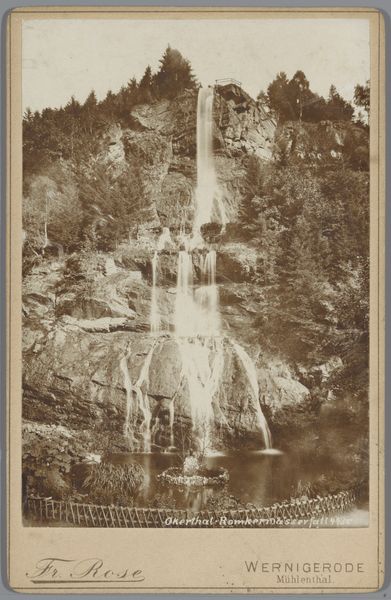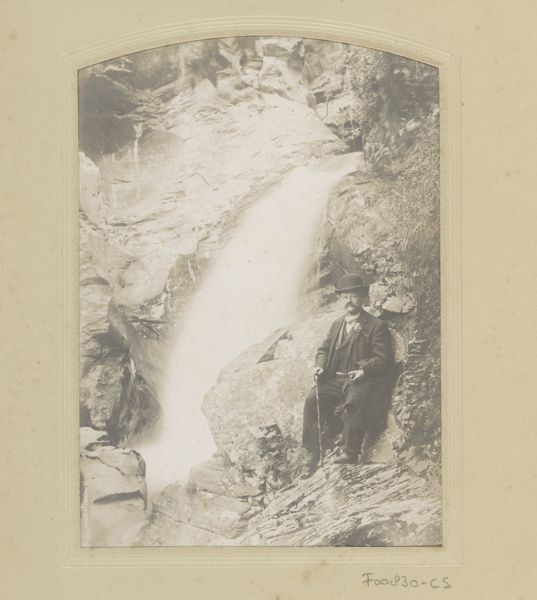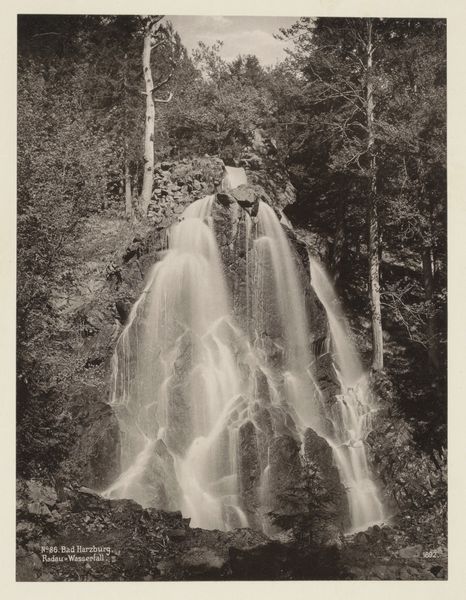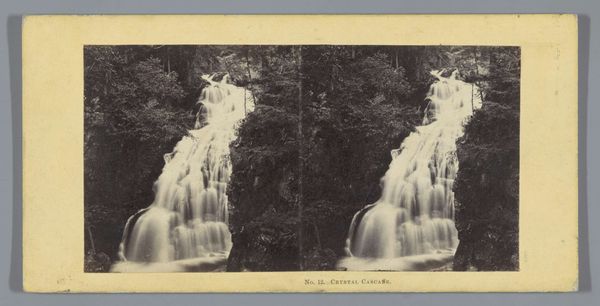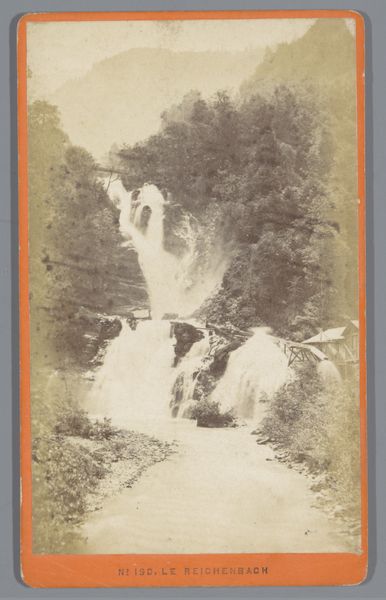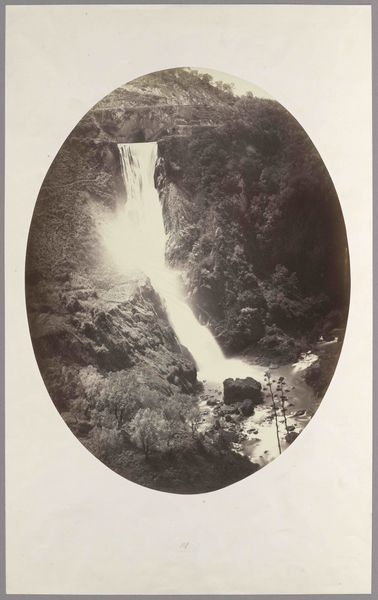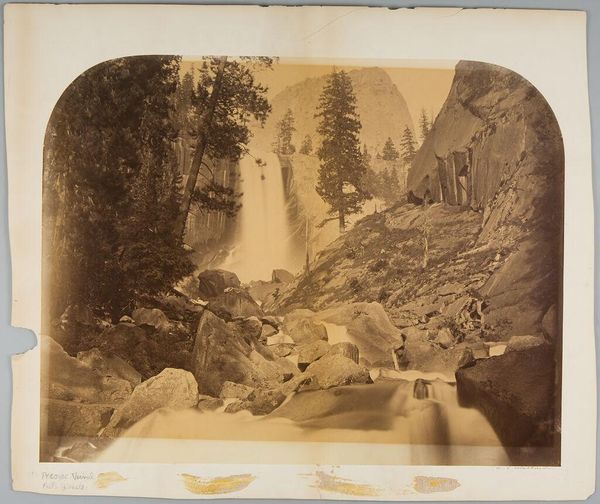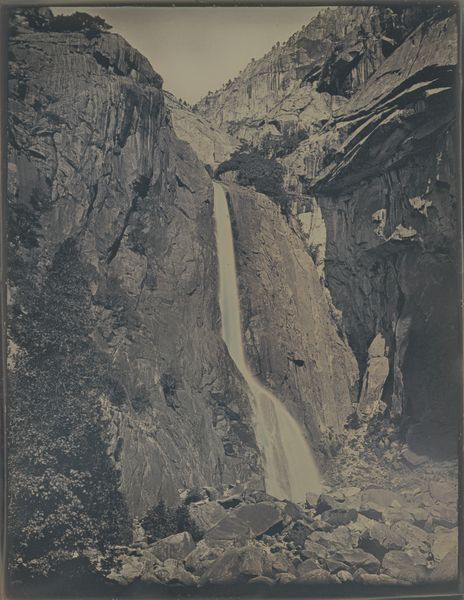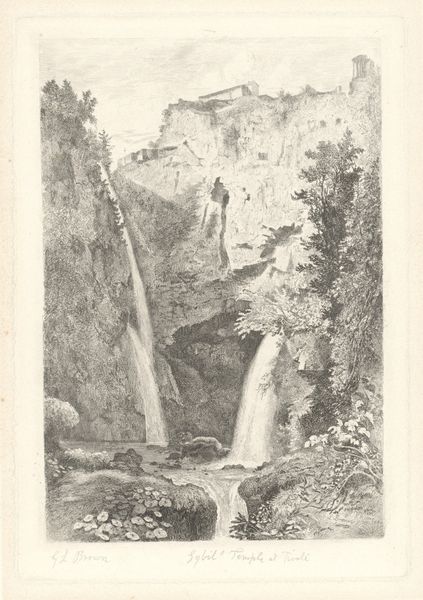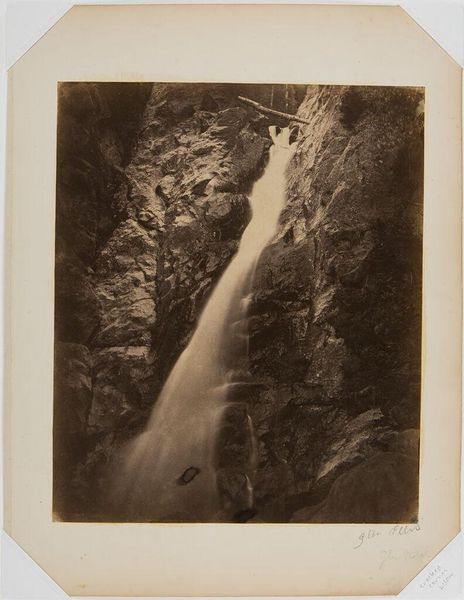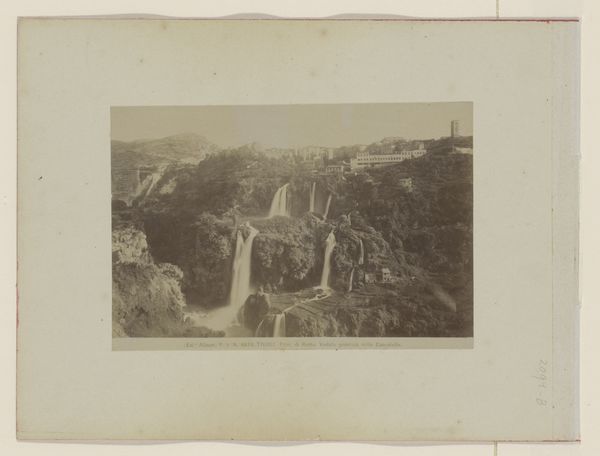
photography, gelatin-silver-print
#
impressionism
#
landscape
#
waterfall
#
photography
#
gelatin-silver-print
Dimensions: height 101 mm, width 63 mm
Copyright: Rijks Museum: Open Domain
This is ‘Giessbachwaterval’, a photograph made by Arthur Gabler at an unknown date, using the wet collodion process. In this technique, a glass plate is coated with a light-sensitive emulsion right before being put in the camera. The photographer then has to act quickly to expose and develop the image, while the plate is still wet. The final print on albumen paper gives the image its sepia tone and soft, slightly faded appearance. Gabler’s choice of the wet collodion process, popular in the mid-19th century, speaks to photography's role in capturing and commodifying landscapes. The process, demanding skill and time, contrasts with the ease of modern photography, highlighting a different relationship between the photographer, subject, and viewer. It’s a great example of how materials and processes are not just about technique, but also about the cultural and social context in which art is made and viewed.
Comments
No comments
Be the first to comment and join the conversation on the ultimate creative platform.
